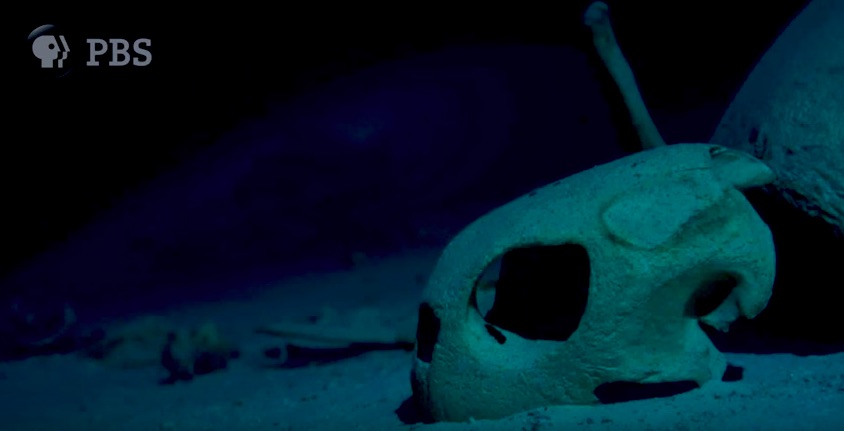
A new documentary reveals some of the most awe-inspiring and mysterious parts of the Pacific Ocean.
"Big Pacific," which airs tonight (June 21) at 8 p.m. ET on PBS, will show viewers some of the wonders found beneath the waves of the biggest ocean on Earth.
One of them is a mass turtle graveyard buried deep beneath the waves in the state of Sabah, Malaysia, underneath the island of Borneo. A kaleidoscope of color on a vibrant coral reef gives way to darkness in a network of underwater caves. Inside these labyrinthine tunnels, 60 feet (18 meters) below the ocean's surface and roughly 200 feet (61 m) into the landmass of the island itself, lie dozens of turtle fossils. Amongst the grown turtle shells lie the remains of stillborn turtles.
Exactly how they got there is a mystery. When Jacques Cousteau discovered the spot, he likened it to the mythic elephant graveyards of Africa. But sea turtles don't congregate to die, and turtles can hold their breath for several hours, meaning a mass drowning isn't to blame.
Sea turtles are also expert navigators that routinely migrate thousands of miles to reproduce, so the idea that they all spontaneously got lost in the pitch blackness is a long shot, researchers have said. What's more, female turtles hatch their babies on sand, not in caves. The strange boneyard is the only one of its kind known on Earth, according to the PBS show.
How these turtles met their end and why so many died in this cave are two of the many mysteries of the world's biggest ocean, the documentary shows.
The other three episodes will spotlight the life that springs up near the ring of fire, the relentless search for food in the ocean, and the bizarre adaptations that creatures have developed to live in the Pacific.
Sign up for the Live Science daily newsletter now
Get the world’s most fascinating discoveries delivered straight to your inbox.
Originally published on Live Science.

Tia is the managing editor and was previously a senior writer for Live Science. Her work has appeared in Scientific American, Wired.com and other outlets. She holds a master's degree in bioengineering from the University of Washington, a graduate certificate in science writing from UC Santa Cruz and a bachelor's degree in mechanical engineering from the University of Texas at Austin. Tia was part of a team at the Milwaukee Journal Sentinel that published the Empty Cradles series on preterm births, which won multiple awards, including the 2012 Casey Medal for Meritorious Journalism.









